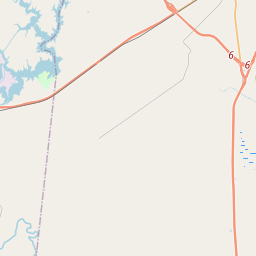First United Methodist Church of Port Lavaca
Historical marker location:






The First Methodist Church of Port Lavaca was organized in 1841 by the Rev. Joseph P. Sneed of the Victoria circuit. By 1844 the Lavaca congregation had joined the newly formed Methodist Episcopal Church, South. Though hurricanes plagued the area, the congregation persevered. The 1862 building was destroyed in 1875; its 1898 replacement, which harbored the bell of the ravaged Indianola Methodist Church, was lost in the storm of 1945. A complex of facilities was completed in 1958, with a new sanctuary added in 1975. The First United Methodist Church of Port Lavaca continues a tradition of service to the community. (1998)
As one of the most visible programs of the Texas Historical Commission (THC), historical markers commemorate diverse topics in Texas history, including: the history and architecture of houses, commercial and public buildings, religious congregations, and military sites; events that changed the course of local and state history; and individuals who have made lasting contributions to the state, community organizations, and businesses.
More history nearby
Texas is known for its love of football, and the state has produced many great football players, including legends like Tom Landry, Earl Campbell, and Vince Young.
During the early 19th century, Calhoun County became a part of the Mexican state of Coahuila y Tejas. However, with the Texas Revolution in 1836, the region gained independence from Mexico and became a part of the Republic of Texas. The county was officially established in 1846 and was named after John C. Calhoun, a prominent statesman and U.S. Vice President.
The economy of Calhoun County has always been closely tied to agriculture, particularly rice and cotton farming. The presence of rich soil and a favorable climate made the region ideal for agricultural production. Later, after the construction of the Gulf Intracoastal Waterway in the early 20th century, the county's economy grew with the expansion of the fishing and shrimping industries.
One significant event in the county's history occurred in 1942 when the U.S. Army established the Matagorda Island Army Airfield. The airfield served as a training facility during World War II and trained thousands of pilots. Today, it is part of the Matagorda Island Wildlife Management Area and is a popular tourist destination.
Calhoun County's history is a testament to the resilience and adaptability of its people. The region continues to flourish, balancing its agricultural heritage with advancements in energy, tourism, and commerce, making it a vibrant and thriving community.
Calhoun County Timeline
This timeline provides a glimpse into the major events and milestones that have shaped the history of Calhoun County, Texas.
- 1832 - The area now known as Calhoun County is part of the Mexican territory of Coahuila y Tejas.
- 1836 - Texas gains independence from Mexico and Calhoun County is established as a separate entity.
- 1839 - The town of Indianola is founded and becomes a major port on the Texas coast.
- 1852 - Calhoun County is officially organized, with Indianola as its county seat.
- 1875 - A hurricane devastates Indianola, leading to the decline of the town as a major port.
- 1886 - Port Lavaca becomes the new county seat of Calhoun County.
- 1931 - The Discovery Well is drilled, leading to the discovery of oil in Calhoun County.
- 1945 - The Calhoun County Navigation District is created to oversee the development and maintenance of the Port of Port Lavaca.
- 1961 - The Texas Gulf Sulphur Company begins operations in Calhoun County, leading to a significant economic boost.
- Today - Calhoun County is a thriving coastal community with a strong economy based on industries such as petrochemicals, agriculture, and tourism.